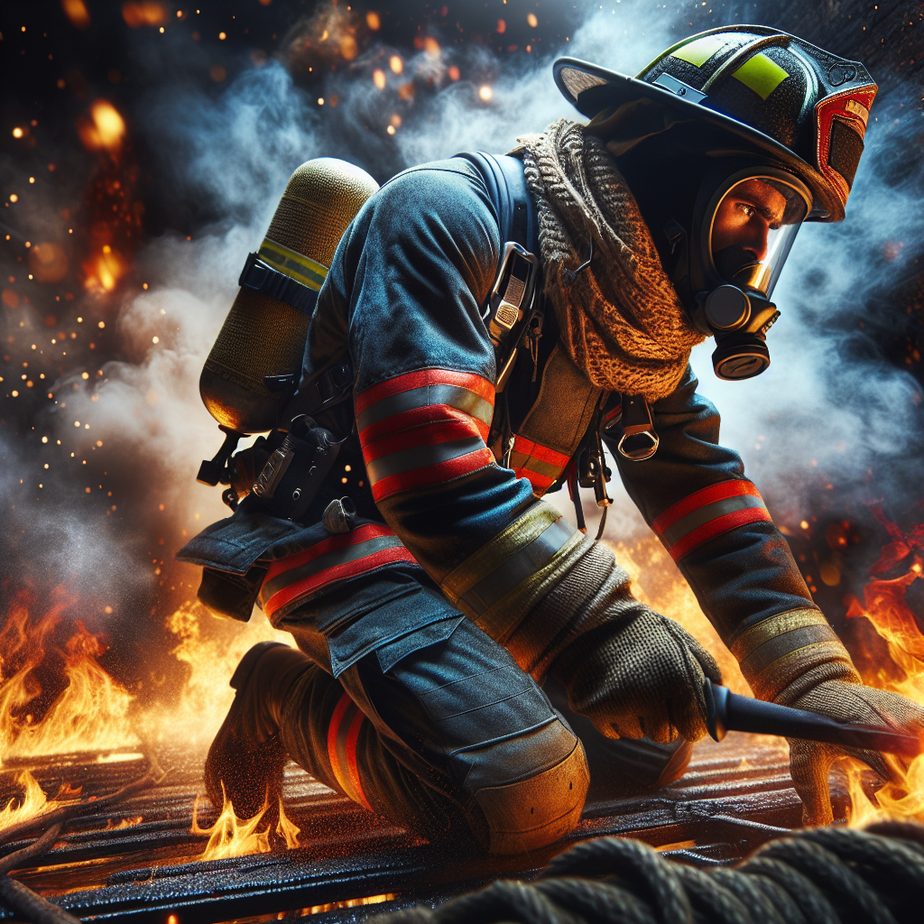🔥 1. Situational Awareness: Reading the Flames Like a Pro.
Imagine this: It’s a scorching Aussie summer day, the wind’s whipping your hair around like you’re at the Sydney Royal Easter Show, and you’re smack in the middle of a bushfire zone. What separates a seasoned firefighter from a rookie isn’t just bravery—it’s situational awareness.
In simple terms, situational awareness is your ability to read the environment like you’d read a cricket scoreboard. Are the flames moving faster uphill? (Spoiler: fire loves an incline). Is the wind changing direction more suddenly than a kookaburra’s laugh? These are signals.
🌬️ Pro Tip: Wind is a trickster in the Aussie Outback. It shifts direction faster than a pub trivia host handing out questions. Pay close attention to wind speed and patterns to anticipate the fire’s next move.
Every firefighter needs to keep their head on a swivel—because if you’re not tuned into your environment, you could miss something life-threatening. Think of situational awareness like your favorite surfboard: you can’t ride the wave (or survive the flames) without it.
💪 2. Physical and Mental Fitness: Strong Bodies, Strong Minds
Now, saving a koala from a eucalyptus tree might make for a lovely Instagram photo, but firefighting is no picnic at Bondi Beach. It’s gruelling, both physically and mentally.
In temperatures that could bake a lamington in minutes, you’re hauling heavy hoses, axes, and breathing apparatus while navigating uneven terrain. Think of it like CrossFit but with actual stakes: lives, property, and entire ecosystems.
🛑 Don’t Skip This: Mental fitness is just as crucial as lifting those heavy pumps. Fires are unpredictable, and stress levels can shoot up faster than a BBQ sausage on high heat. Trust me, you can’t out-flex anxiety—so make mindfulness techniques or even quick breathing exercises a habit.
🔥 Fun Fact: Australian firefighters often battle unique wildlife interruptions—from swooping magpies to startled kangaroos leaping across fire lines. Keeping cool amidst chaos? An essential skill.
🧠 3. Mastering Fire Behavior: Treat it Like an Aussie BBQ Gone Horribly Wrong
Let’s face it, fire might be beautiful to watch (fireworks, anyone?) but it’s also a relentless predator. To beat it, you need to understand how it moves, “thinks,” and consumes.
Here’s what Aussie firefighters know better than anyone: Bushfires can create their own weather systems. You’re not just putting out flames; you’re wrestling with rising temperatures, downdrafts, and potential fire tornadoes (yes, that’s a thing).
🔥 Firefighter Cheat Sheet: Remember the fire triangle: Heat, oxygen, and fuel. Knock out just one of these elements, and you’ve quenched its thirst for destruction. So if you’re heading into dense gumtree forests or grasslands—two prime sources of “fuel”—always consider where your suppression tactics might have the biggest impact.
What’s that smell? Is it smoke or your campfire-detecting sixth sense? Smell is often your earliest warning sign—don’t ignore it.
🛠️ 4. Tools of the Trade: Gear Up Like an Aussie Action Hero
If firefighting were a sport (and it kind of is), your gear would be your uniform. Every firefighter has their MVP tools—each one as iconic as a Tasmanian Devil growl.
🧯 The Classics: Fire extinguishers, helmets, and hoses. It’s standard kit, but in an Aussie bushfire, your thermal imaging camera becomes your first mate (the tech equivalent of a Vegemite sandwich—compact, lifesaving, and keeps everything steady).
🪓 The Underdog: Then there’s the Pulaski tool. Part axe, part hoe, it’s the Swiss Army knife firefighters use to dig trenches and create firebreaks.
🎒 Pro Tip: Never underestimate the humble personal safety pack. Full of fire blankets, emergency markers, and hydration systems, it’s your ultimate insurance on the job.
But no tool is more vital than fight-ready boots—seriously, don’t skimp on these. Unless you enjoy toasty toes more than being proactive in risky situations.
🚨 5. Communication: Your Lifeline in the Thick of It
Firefighters don’t just grunt and spray water around like it’s a scene from “Mad Max.” Communication is the sturdy backbone of the entire operation. And no, shouting “Toss me the hose, mate!” doesn’t count as strategy.
In Australia, where bushfires can spread faster than the gossip in a small town, remaining connected keeps everyone alive and organized. Radios are your BFF, and clear, concise communication can mean the difference between holding a fireline or abandoning it quickly and safely.
📻 The Golden Rules of Firefighter Talk: Always address your team by name or role on the comms—confusing people mid-blaze is not a good look. Use the phonetic alphabet if you’re unsure, and for the love of pavlova, keep chatter minimal but meaningful.
🏡 Tip for Homeowners: If you’re in a fire-prone region, do firefighters a favor—listen to public emergency broadcasts, and always follow evacuation protocols. You could make their job infinitely easier by clearing your fire-prone backyard (no fire loves a messy gumleaf pile more than one in mid-burn mode).
These five skills are the cornerstone of Aussie firefighting—equal parts daring, strategy, and good old-fashioned teamwork, with a sprinkle of local wit. Let the flames know who’s boss. 🌞🔥



